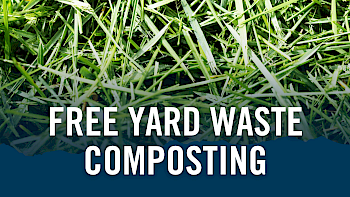
How to Green Your Holiday
The holidays are a time for family and friends; a time of relaxation and joy (and probably a little bit of stress); and a time for reflection on the past year and of hope for the year ahead.
The holidays are also a time of significant environmental impact. In the U.S., household waste increases 25% between Thanksgiving and New Year’s Day. This waste includes about 28 billion pounds of food and over 6 billion holiday cards. From food and decorations to gift wrapping to the gifts themselves, each decision we make affects the environment. No matter what holiday you celebrate, these tips will help you reduce your impact and celebrate a little more consciously.
Shop Local and Secondhand
In 2021, U.S. holiday retail sales are forecasted to be between $843.4 billion and $859 billion. With each order you place, an environmental impact is made. In 2018, 900 million packages were delivered between Thanksgiving and New Year’s Day by USPS alone. According to the EPA, about 30% of all greenhouse gas emissions in the U.S. come from transportation. Globally, the fashion industry accounts for about 10% of carbon emissions and 20% of wastewater. With this information in mind, here are a few ways to reduce impacts from your gift choices:
- Shop local. Instead of looking to Amazon or department store websites, head outside and browse your local retail stores. If you can take alternative modes of transport to get there, like walking, biking, or taking the gondola or bus, it's even better.
- Shop secondhand. Browse thrift stores, vintage stores, and antique shops for quality finds. The average person keeps a garment for less than 3 years. By shopping secondhand, you are extending the product's lifespan and reducing its environmental impact (and yours).
- Choose sustainable materials. Look for products made from more sustainable materials like organic cotton, hemp, recycled fibers, and FSC certified wood products. The two largest impact phases for apparel products are typically the raw materials phase and the consumer use/care phase.
Support local businesses while reducing your carbon footprint. Don’t forget your reusable bag when you shop!
Packaging
Wrapping paper is the go-to packaging for holiday gifts. About 4.6 million pounds of wrapping paper are used in the U.S. each year. Unfortunately, most wrapping paper is not recycled. It's time to get creative with packaging - no artistic experience needed.
- Recyclable wrapping paper. The good news is that most wrapping paper is recyclable. This includes wrapping paper that is plain or has a printed design and is non-laminated (a.k.a. does not have a glossy finish). The fancier the wrapping paper, the less recyclable it is. Wrapping paper with glitter, foil, plastic, sequins, or a non-paper texture cannot be recycled. It also cannot be recycled if it has gift labels, tape, ribbons, or bows still attached.
- Reuse packaging. Save your gift wrap, boxes, bags, ribbons, and bows from this year's festivities and reuse them next year and the year after. It's also one less cost during the holidays.
- Use old maps, newspapers, and magazine articles. Try wrapping gifts in papers you already have around the house. If you saw a particularly funny comic strip or interesting article in the newspaper, consider using it to wrap a gift for someone who would enjoy it as well.
- Fabric wraps. Use scarves, fabric scraps, cloth napkins - any type of fabric you have around the house - to wrap presents. It serves as great reusable packaging while also allowing you to get as creative as you want with fabric type, wrapping style, and print.
Consider Experiences over Things
Taking a page out of Marie Kondo's book, I want you to think about the items you own and the products you plan to buy this holiday season. Do they spark joy? If not, are they essential? Now think about your favorite memories. Do they revolve around a product, quality time with friends and family, or a time of self-care? This holiday season, consider giving the gift of an experience over a product.
Mountain Village has incredible experiences available right outside your door: For those seeking relaxation, the community offers spa packages and yoga classes; for the more adventurous spirit, explore skiing, mountain biking, and stand-up paddleboarding; and for the social butterfly, consider a restaurant or brewery gift card or concert tickets. For a gift that keeps on giving, consider gifting a 14-week CSA share through Mountain Village’s Farm to Community Program or making a donation - either time or money - to your favorite non-profit or charity. Learn more about all that the community has to offer!
Energy
Let's talk energy. In December alone, the average U.S. household will use about 65 kWh of electricity for holiday lights and spend an additional $12 on their energy bill. This amount of electricity is equivalent to driving 116 miles or charging 5,603 smartphones. Collectively, Americans are projected to use 3.5 billion kWhs for holiday lights, spending $645 million dollars on electricity for the month of December. Luckily, you can decrease your energy consumption and save money through these easy fixes:
- Replace your incandescent lights with LED lights. LED lights are 75% more efficient than traditional lights and last 25 times longer.
- Recycle your old holiday lights. Check out the recycling programs through Holiday LEDs and Christmas Light Source.
- Turn off the lights. When string lights are on, try turning off the other lights in your house. Chances are you won't need all of the typical sources for adequate lighting. Don't forget to turn off the interior and exterior lights when you go to bed. Not only does this save energy, but it is safer as well.
Christmas Trees - Real is Better than Fake; Potted is Better than Cut
If you celebrate Christmas, an essential part of your home is presumably a Christmas tree. In the U.S., 25 to 30 million real trees and over 10 million artificial trees are sold each year. In evaluating which tree to get, consider the following:
- Real trees
- Over 350 million Christmas trees are currently growing in the U.S., thereby supporting American jobs and local economies. According to the National Christmas Tree Association, the U.S. Christmas tree farming industry employs over 100,000 people at over 15,000 farms.
- Christmas trees mitigate climate change. The trees take about 7-10 years to grow. During their lifetime, the trees and soil remove carbon dioxide (a greenhouse gas) from the atmosphere in a process called carbon sequestration.
- When the trees are cut down, one to three seedlings are typically planted in one tree's place. This continues the cycle of absorbing carbon dioxide from the atmosphere. These tree farms also help preserve land and protect it from being developed.
- Real trees are recyclable and compostable. San Miguel County is hosting a Holiday Tree Recycling Event from December 26 through January 31. The collection site is about a 10-15 minute drive from Mountain Village and 100% worth it.
- Consider renting or buying a real potted tree. This option allows for the trees to be reused each year and to continue to grow, thereby absorbing carbon dioxide year over year and contributing to a healthier environment for all. For a local option, check out Seas of Trees' Potted Christmas Tree Fundraiser.
- Artificial trees
- 80-85% of artificial trees are manufactured in and imported from China. These trees travel between 8,000 to 13,000 miles to get from the factory to your door, producing greenhouse gas emissions along the way.
- The carbon footprint of an artificial tree is about 10 times greater than that of a recycled or composted real tree.
- Polyvinyl chloride (PVC) and/or polyethylene (PE) plastics are the main ingredients in artificial trees. These plastics are known to have significant health risks, particularly PVC which has been linked to birth defects, hormone disruption, and cancer. The State of California even requires to be some labeled with the warning: “This product contains chemicals including lead, known to the State of California to cause birth defects or other reproductive harm”.
- They are extremely difficult to recycle. Most recycling facilities in the U.S. do not have the capabilities to separate the materials for recycling. PVC trees are especially difficult to recycle because of the combination of chemical additives used to produce PVC.
- Artificial trees made from recycled plastic are better that those made of virgin plastic. Recycled plastic eliminates the need for fossil fuels used in plastic production and extends the life cycle of the existing plastic material.
If you already have an artificial tree, use it for as long as possible and for at least 8-12 years. The longer you use the tree, the smaller your carbon footprint. If you are debating which tree to choose, a real tree is the way to go.


